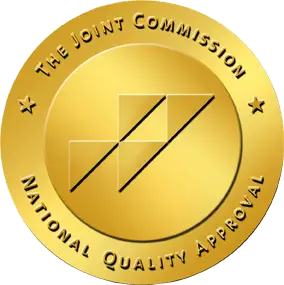Key Takeaways
- Dihydrocodeine is a semi-synthetic opioid used for pain relief, cough suppression, and dyspnea, with potential for abuse and addiction.
- Its misuse contributes to the opioid crisis, with addiction prevalence difficult to ascertain but significant in the context of opioid-related health concerns.
- In the U.S., dihydrocodeine is less common than other opioids, but misuse among psychoactive substance users is noted.
- Europe faces challenges with dihydrocodeine misuse, with fatalities and opioid dependence impacting public health.
- Long-term use of dihydrocodeine can lead to brain function changes, tolerance, hyperalgesia, and cognitive impairments.
- Dopamine's role in the brain's reward system is central to dihydrocodeine addiction, reinforcing drug-taking behavior.
- Key symptoms of dihydrocodeine addiction include physical withdrawal symptoms, psychological changes, and behavioral signs of drug-seeking.
- Treatment for dihydrocodeine addiction involves detox, therapy, and potentially medication-assisted treatment (MAT).
- The societal impact of dihydrocodeine addiction includes strain on social services, healthcare costs, and broader social issues.
- Prevention strategies include responsible prescribing, patient education, and early intervention to reduce addiction risks.
Overview of Dihydrocodeine
Dihydrocodeine is an opioid analgesic medication primarily prescribed for the management of moderate to severe pain, severe dyspnea (shortness of breath), and as an antitussive (cough suppressant). Developed in Germany in 1908 and marketed since 1911, dihydrocodeine is a semi-synthetic opioid, meaning it is partially man-made, derived from natural opiate alkaloids. Dihydrocodeine works by binding to opioid receptors in the central nervous system, which blocks the transmission of pain signals, thereby reducing the perception of pain.
It is available in various forms, including tablets, solutions, and elixirs. In some cases, dihydrocodeine is combined with other pain relievers such as paracetamol (acetaminophen) or aspirin. While effective for pain relief, dihydrocodeine can cause side effects like drowsiness, constipation, and nausea. Due to its opioid nature, dihydrocodeine has the potential for abuse and addiction, which is a significant concern when it is used improperly or sold illicitly under various street names such as 'Sizzurp,' 'Purple drank,' and 'Lean.'
It's essential for healthcare providers to prescribe dihydrocodeine cautiously and for patients to use it as directed to minimize risks. The NHS advises that it should only be used when other painkillers like paracetamol, ibuprofen, and aspirin have not been effective. Additionally, patients are cautioned against activities such as driving or operating machinery if they experience drowsiness as a side effect.
Global Prevalence of Dihydrocodeine Addiction
Dihydrocodeine (DHC) addiction is a component of the broader opioid crisis, though its prevalence is not as widely documented as other opioids. DHC is an opioid analgesic used for managing moderate to severe pain, cough suppression, and in some cases, as a substitute in opioid dependency treatment. Despite its legitimate medical uses, DHC has potential for abuse and addiction. The Cochrane review highlights concerns over DHC's role in reducing illegal substance use, indicating its significance in addiction treatment protocols.
Treatment Can Be Life Changing. Reach out today.

In the United States, DHC is infrequently prescribed, which complicates the task of tracking specific addiction statistics. However, general opioid abuse data from 2015 indicated that approximately 2 million Americans aged 12 and older had a substance use disorder involving prescription pain medication, which may include DHC. The misuse of DHC, particularly when obtained illicitly, has been associated with a rising prevalence of deaths, suggesting an undercurrent of addiction issues. In Europe and Australia, the extent of Dihydrocodeine misuse is not fully known, but individual case reports suggest its presence in the landscape of substance use disorders.
While the global prevalence rates for DHC addiction specifically are difficult to ascertain, the evidence suggests that opioid addiction, including DHC, remains a significant health concern with far-reaching consequences. The challenge lies in separating DHC statistics from broader opioid-related data to fully understand its impact on addiction prevalence.
Understanding Dihydrocodeine Addiction Prevalence in the U.S.
While dihydrocodeine is a known opioid medication, its presence and the resulting addiction rates in the United States are less pronounced compared to other opioids. Dihydrocodeine and its combination products are not as commonly seen in the U.S. because codeine, which has similar potency and efficacy, is more frequently used. Consequently, dihydrocodeine addiction is relatively rare in the country, though still possible if the drug is accessible. Research indicates that dihydrocodeine can be used for substitution therapy, similar to methadone, in the treatment of opiate use disorders.
Opioid misuse, including dihydrocodeine, remains a significant healthcare concern in the U.S. The misuse of weak opioid analgesics like dihydrocodeine has been observed among users of psychoactive substances, and the number of complications related to medication abuse has recently surpassed those related to illegal substances. Recognizing the signs of dihydrocodeine addiction, such as unusual tiredness, weight loss, and obsessive behavior over drug acquisition, is crucial for early intervention and treatment. Treatment for dihydrocodeine addiction involves medical detox and professional recovery programs to support a substance-free life.
The Prevalence and Impact of Dihydrocodeine Addiction in Europe
Dihydrocodeine (DHC) is an opioid analgesic that has been implicated in a significant number of substance abuse-related fatalities in Europe. A study analyzing UK data from 1997 to 2007 found that DHC was identified in 584 fatalities, with 44% of these deaths directly attributed to the drug, representing approximately 6.8% of all opiate/opioid-related deaths during that period. The typical demographic affected were White males in their early thirties. Research suggests that the misuse of opioids, including DHC, is a persistent issue, with opioids being identified in 85% of fatal overdoses in Europe.
Furthermore, opioid dependence, which includes dependence on substances like DHC, affects 0.4%-0.8% of adults in Europe. The European Monitoring Centre for Drugs and Drug Addiction (EMCDDA) highlights that heroin and other opioids, such as DHC, continue to pose challenges for harm reduction and treatment services across the continent. The EMCDDA's 2023 report emphasizes the health burden attributed to illicit drug consumption, particularly opioids.
Measures to minimize the risk of addiction to medicines containing DHC have been discussed in a Public Assessment Report by the UK's Medicines and Healthcare products Regulatory Agency (MHRA), which addresses the need for new practices to prevent addiction to over-the-counter medicines that include DHC. Despite efforts to prevent an opioid epidemic similar to that of the U.S., European authorities acknowledge the ongoing need to combat opioid misuse and promote non-opioid-based pain management systems. The MHRA report and other policy initiatives reflect this commitment.
Understanding the Science Behind Dihydrocodeine Addiction
Dihydrocodeine is an opioid medication often used to treat moderate to severe pain. Its potential for addiction is a growing concern, as misuse can lead to serious health consequences. The science of addiction reveals that dihydrocodeine, like other opioids, alters brain chemistry by triggering an excessive release of dopamine, which reinforces drug-taking behavior. This effect on the brain's reward circuitry can lead to the compulsive use characteristic of addiction, despite harmful consequences.
Studies have shown that long-term use of dihydrocodeine can result in physical changes in the brain, particularly in areas responsible for judgment, decision-making, and behavior control. Over time, the brain may produce fewer neurotransmitters in the reward circuit or reduce the number of receptors available to receive signals, which can exacerbate the cycle of addiction ( NCBI ). Additionally, the efficacy of dihydrocodeine as a maintenance treatment for opiate dependence has been explored, with some evidence suggesting it could be a viable alternative to methadone ( PubMed ).
Understanding the science of dihydrocodeine addiction is crucial for developing effective treatment strategies. Recognizing the biological underpinnings of addiction can help destigmatize the condition and encourage those affected to seek professional help. It also informs the development of medications and therapies that target the specific brain changes caused by opioid misuse ( NIDA ).
Dopamine's Influence on Dihydrocodeine Dependency
Dopamine, a critical neurotransmitter in the brain's reward system, plays a significant role in the development of dihydrocodeine addiction. Drugs of abuse, including opioids like dihydrocodeine, typically increase dopamine levels in the brain, particularly in areas associated with pleasure and reward, such as the nucleus accumbens. This surge in dopamine reinforces the drug-taking behavior, as the brain begins to associate dihydrocodeine use with positive reinforcement.
Research has shown that the acute increase in dopamine signaling within the striatum is a common effect of most drugs used by humans, which includes the opioid class to which dihydrocodeine belongs. This effect is crucial in the reinforcing properties of these substances, often leading to the development of addiction. Studies have indicated that the ability of dihydrocodeine and other opioids to induce burst-like discharges of dopamine is closely linked to their addictive potential. Moreover, the reinforcement of drug use and the formation of drug-seeking habits are further strengthened by dopamine's role in learning and execution of goal-directed behaviors.
Long-term dihydrocodeine use can result in changes to the dopamine system, affecting both the release and reception of dopamine. This can lead to a reduced response to natural rewards and an increased focus on drug-related cues, a phenomenon described by the 'Incentive Sensitization Theory'. This theory suggests that repeated drug use enhances mesolimbic dopamine transmission, making the drug and drug-related stimuli more salient, or 'wanted', thus driving compulsive drug-seeking behaviors and making recovery challenging.
Long-Term Effects of Dihydrocodeine on Brain Function
Long-term dihydrocodeine use can lead to significant changes in brain function and structure. As an opioid, dihydrocodeine acts on the central nervous system to block pain signals, but with prolonged use, the body can develop tolerance, necessitating higher doses to achieve the same pain relief. This can further escalate to hyperalgesia, where individuals become more sensitive to pain. Research indicates that such tolerance and hyperalgesia are common in conditions requiring long-term pain management.
Moreover, opioid-related overdoses, which may occur with substances like dihydrocodeine, have been associated with brain injuries and neurocognitive impairments. A systematic review by Winstanley et al. found that non-fatal opioid overdoses can lead to a range of cognitive deficits and brain abnormalities, with some individuals experiencing partial recovery over time. These findings underscore the potential for long-term dihydrocodeine use to cause lasting damage to the brain.
While the research primarily focuses on opioids in general, the implications for dihydrocodeine are clear. Chronic use can alter brain structures involved in cognition and emotion, leading to impaired problem-solving, impulse control, and increased risk-taking behaviors. This can hinder engagement and compliance in treatment and recovery programs, as noted by the Brain Injury Association of America. Therefore, understanding and addressing the cognitive and neurological impacts of long-term dihydrocodeine use is crucial for effective treatment and recovery.
Identifying Dihydrocodeine Addiction: Key Symptoms and Signs
Dihydrocodeine addiction can manifest through various physical, psychological, and behavioral symptoms, which are critical to recognize for timely intervention. Physical signs of addiction include restlessness, muscle and bone pain, insomnia, diarrhea, vomiting, and cold flashes due to withdrawal, as well as constipation and severe respiratory depression in the case of overdose. Additionally, constricted pupils and diminished levels of consciousness may be observed.
Psychologically, individuals may lose interest in activities they once enjoyed and become preoccupied with obtaining and using dihydrocodeine. These behavioral changes often include acting strangely or hiding behaviors related to drug use. The development of tolerance, requiring higher doses for the same effect, can lead to physical and psychological dependence. Recognizing these signs is crucial, as they indicate a need for professional help to prevent further harm and begin the journey towards recovery.
It's important to note that dihydrocodeine is an opioid, and like other opioids, it has a high potential for misuse and addiction. The presence of two or more of these symptoms may indicate an opioid use disorder (OUD), which requires medical attention. In case of suspected overdose, immediate medical intervention is necessary due to the life-threatening risk of respiratory depression.
Navigating Dihydrocodeine Addiction Treatment and Recovery
Dihydrocodeine addiction treatment encompasses a multifaceted approach starting with detoxification, followed by withdrawal management, and leading to long-term recovery strategies. The pathway is individualized, with treatment plans tailored to the specific needs of each person. The initial phase often involves medically supervised detox to manage withdrawal symptoms safely. Following detox, patients may transition to inpatient rehab programs, especially if they have severe addiction or require an environment free from external distractions to focus on recovery.
According to the National Center for Biotechnology Information, dihydrocodeine substitution treatment can be a low-threshold option that reaches a broader range of opiate users. It is considered for its safety profile, reduced toxicity, shorter half-life, and quicker onset of action, which may improve retention in treatment programs. However, detox is merely the first step; comprehensive recovery requires ongoing therapy and support to address the underlying causes of addiction and to prevent relapse.
Rehabilitation centers, like The Recovery Village, offer structured environments where individuals can receive therapy and support. These centers focus on both the physical and psychological aspects of addiction, facilitating a holistic recovery process. It's crucial for those struggling with dihydrocodeine addiction to seek professional help promptly, as signs of addiction can escalate quickly. Recovery is a journey that extends beyond initial treatment, often involving continuous care and support to maintain sobriety and improve quality of life.
Therapeutic Interventions in Dihydrocodeine Addiction Recovery
Recovering from dihydrocodeine addiction, like other opioid addictions, often involves a multifaceted approach that includes therapy as a core component. Therapy serves to address the psychological and behavioral aspects of addiction, providing individuals with strategies to manage cravings, identify triggers, and cope with stress without resorting to substance use. Research indicates that therapy can significantly improve the chances of long-term recovery by helping individuals understand the underlying causes of their addiction and develop healthier coping mechanisms.
Therapeutic modalities commonly used in dihydrocodeine addiction recovery include cognitive-behavioral therapy (CBT), which focuses on changing negative thought patterns and behaviors, and motivational interviewing, which enhances an individual's motivation to change. Group therapy is also an effective tool, providing peer support and a platform for sharing experiences and strategies for maintaining sobriety. Additionally, family therapy may be incorporated to repair relationships and improve the support system around the individual in recovery.
It's essential to recognize that therapy is not a one-size-fits-all solution. Each person's journey to recovery is unique, and treatment plans should be tailored to the individual's specific needs. While therapy is a critical element of treatment, it is often combined with medication-assisted treatment (MAT) and other support services to provide a comprehensive approach to recovery. The goal of therapy in the context of dihydrocodeine addiction is to empower individuals to achieve and maintain abstinence while improving overall mental health and well-being.
Medication-Assisted Treatment Strategies for Dihydrocodeine Addiction
Medication-Assisted Treatment (MAT) is a comprehensive approach to treating opioid use disorders, including dihydrocodeine addiction. It combines FDA-approved medications with counseling and behavioral therapies to treat the whole patient. The goal of MAT is to sustain recovery and prevent opioid overdose. Common medications used in MAT include buprenorphine, methadone, and naltrexone. These medications work by normalizing brain chemistry, blocking the euphoric effects of opioids, relieving physiological cravings, and normalizing body functions without the negative effects of the abused drug.
According to Mayo Clinic Proceedings, dosing strategies for opioid use disorder typically start at lower doses to mitigate side effects, gradually increasing to a maintenance dose that prevents opioid effects for up to 24 hours. The U.S. Food and Drug Administration emphasizes the importance of offering patients access to all MAT options, allowing for individualized treatment plans.
For dihydrocodeine addiction, MAT may be integrated into outpatient rehab programs, which can include therapy sessions and educational workshops. Treatment duration varies based on the severity of the addiction and individual patient needs, but a minimum of 90 days is recommended for effectiveness. It is crucial for patients and their loved ones to be open to MAT as part of the recovery plan, overcoming any stigma associated with this evidence-based treatment method.
Societal Impact of Dihydrocodeine Addiction
The opioid crisis, including dihydrocodeine addiction, has far-reaching consequences that extend beyond individual health issues, affecting various societal and community domains. Research indicates that opioid misuse, such as dihydrocodeine, can lead to a cascade of disruptions within families and communities, impacting multiple generations. The societal impact is multifaceted, with significant implications for education, labor markets, housing security, and public budgets.
For instance, the strain on social services like child welfare, increased food insecurity, and reduced productivity all contribute to fiscal burdens at local and state levels. The opioid epidemic, exacerbated by factors like the COVID-19 pandemic, has put additional pressure on public health, social service, and education systems, leading to a rise in opioid overdoses. The disruption caused by opioid use, including dihydrocodeine, highlights the critical need for effective prevention and treatment strategies to mitigate these societal costs.
Moreover, the opioid epidemic has been linked to broader social issues, such as crime rates and healthcare costs. Addressing the root causes and implementing comprehensive addiction treatment programs are essential for alleviating the societal impact of dihydrocodeine addiction. Studies also suggest that dihydrocodeine itself can be used in maintenance treatment for opiate use disorders, which may offer a pathway to recovery for some individuals and, in turn, help reduce the societal burden of addiction.
Strategies for Preventing Dihydrocodeine Addiction
Preventing addiction to dihydrocodeine, a potent semi-synthetic opioid, is crucial given its high potential for dependence and abuse. Strategies for prevention focus on responsible prescribing practices, patient education, and early intervention. Responsible Prescribing: Healthcare providers should adhere to guidelines for opioid prescriptions, carefully assess the patient's need for pain management, and consider non-opioid alternatives when possible. Prescriptions should be for the lowest effective dose and shortest duration to minimize the risk of addiction.
Patient Education: Patients must be informed about the risks of opioid addiction and the importance of taking medication as prescribed. Education on recognizing early signs of dependence can empower patients to seek help before a full-blown addiction develops.
Monitoring and Support: Regular monitoring of patients prescribed dihydrocodeine is essential to detect any signs of misuse. Support systems, including counseling or support groups, can be beneficial for those at risk of addiction. Additionally, proper disposal methods for unused medication can prevent the potential misuse by others.
Prevention also involves broader public health initiatives, such as awareness campaigns and policies aimed at reducing the availability of opioids and improving addiction treatment access. By implementing these strategies, it is possible to mitigate the risks associated with dihydrocodeine and prevent the onset of addiction.
If you are struggling with a drug or alcohol addiction, it might be time for professional treatment. The experts at The Recovery Village Palm Beach at Baptist Health are able to identify and treat substance use disorders as well as other co-occurring mental health conditions. Contact us today to learn more about treatment programs that can work well for you.










